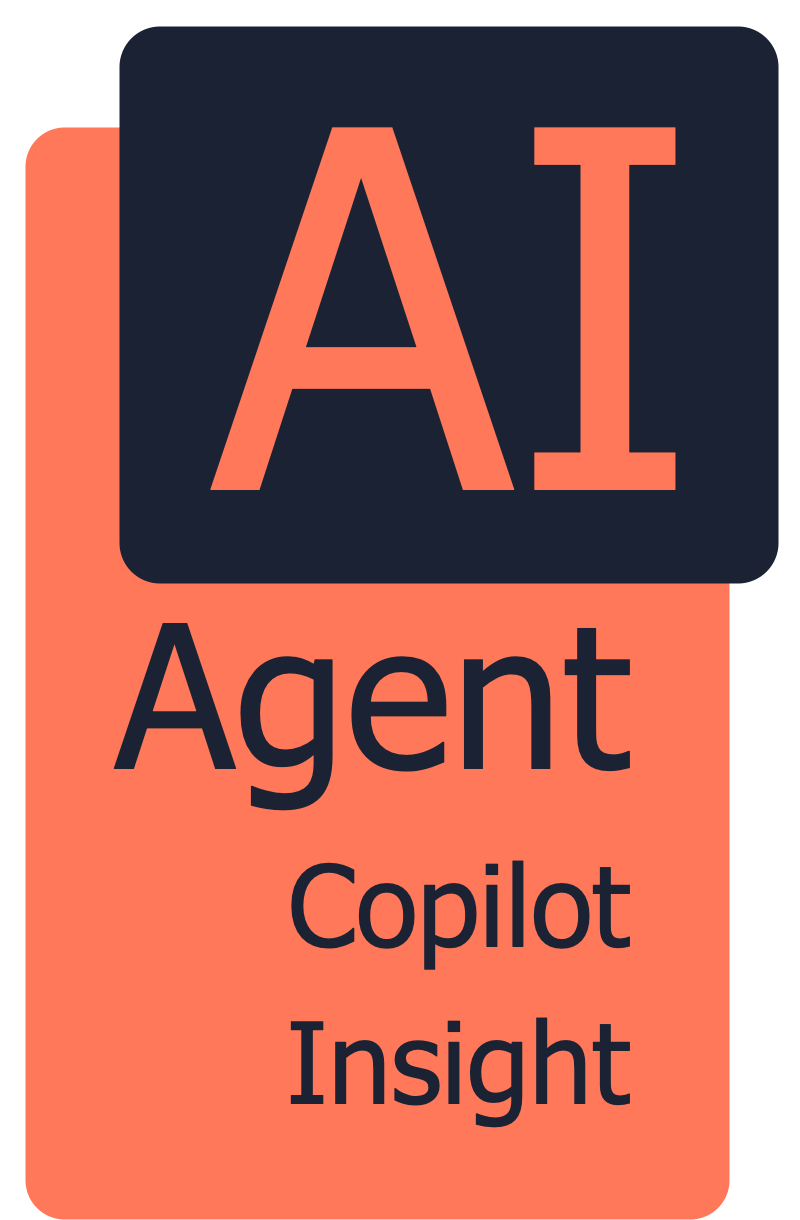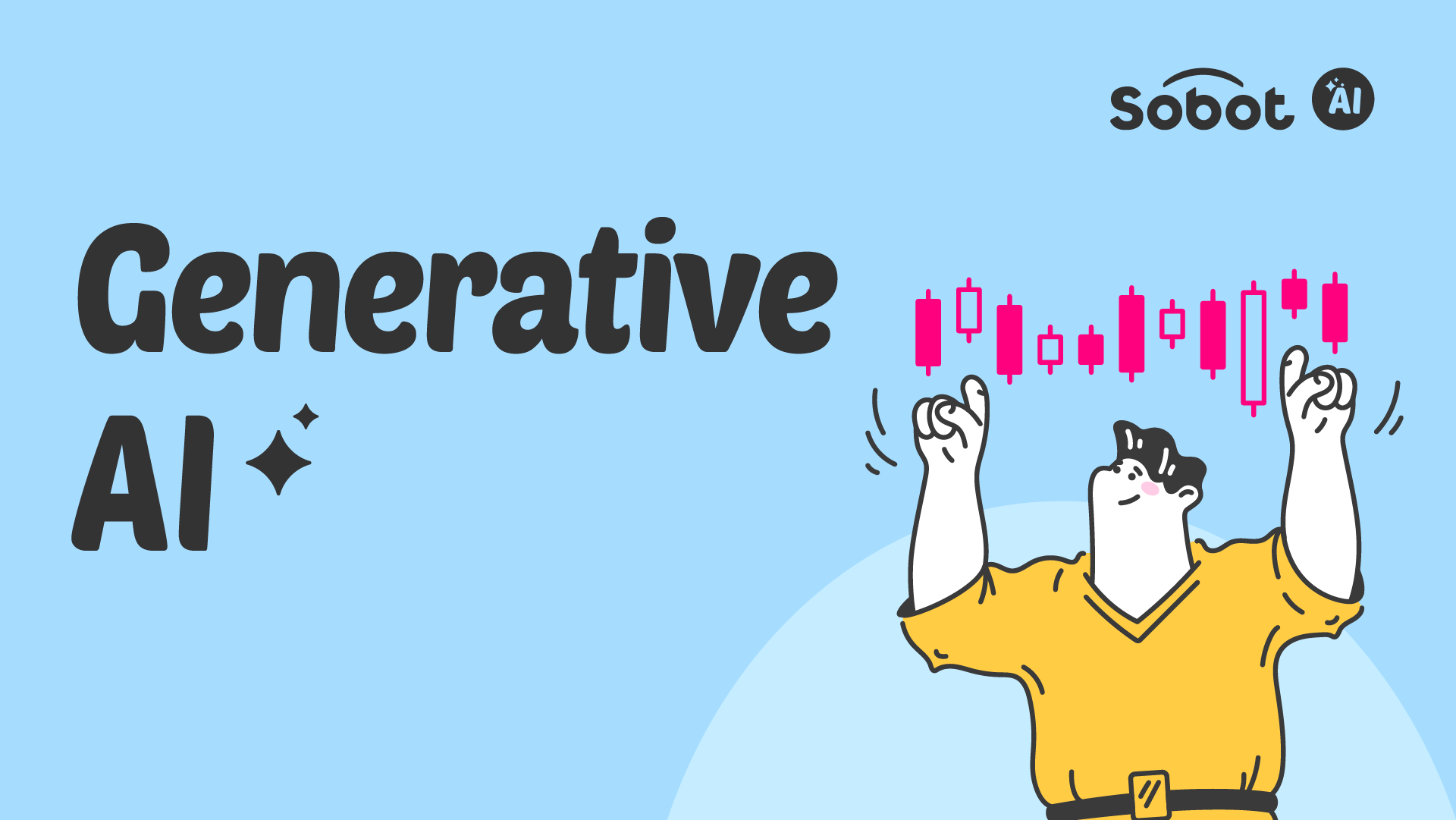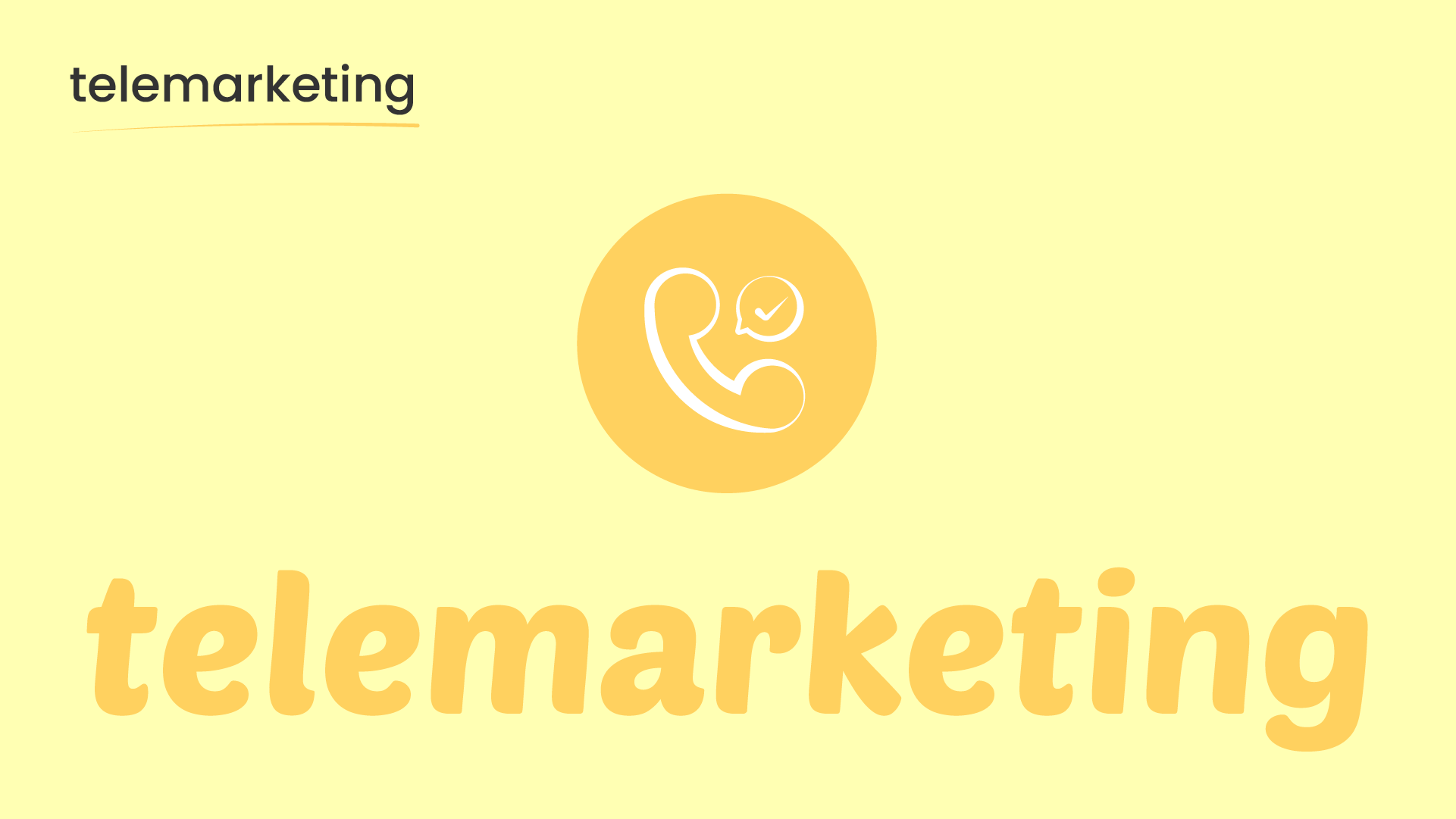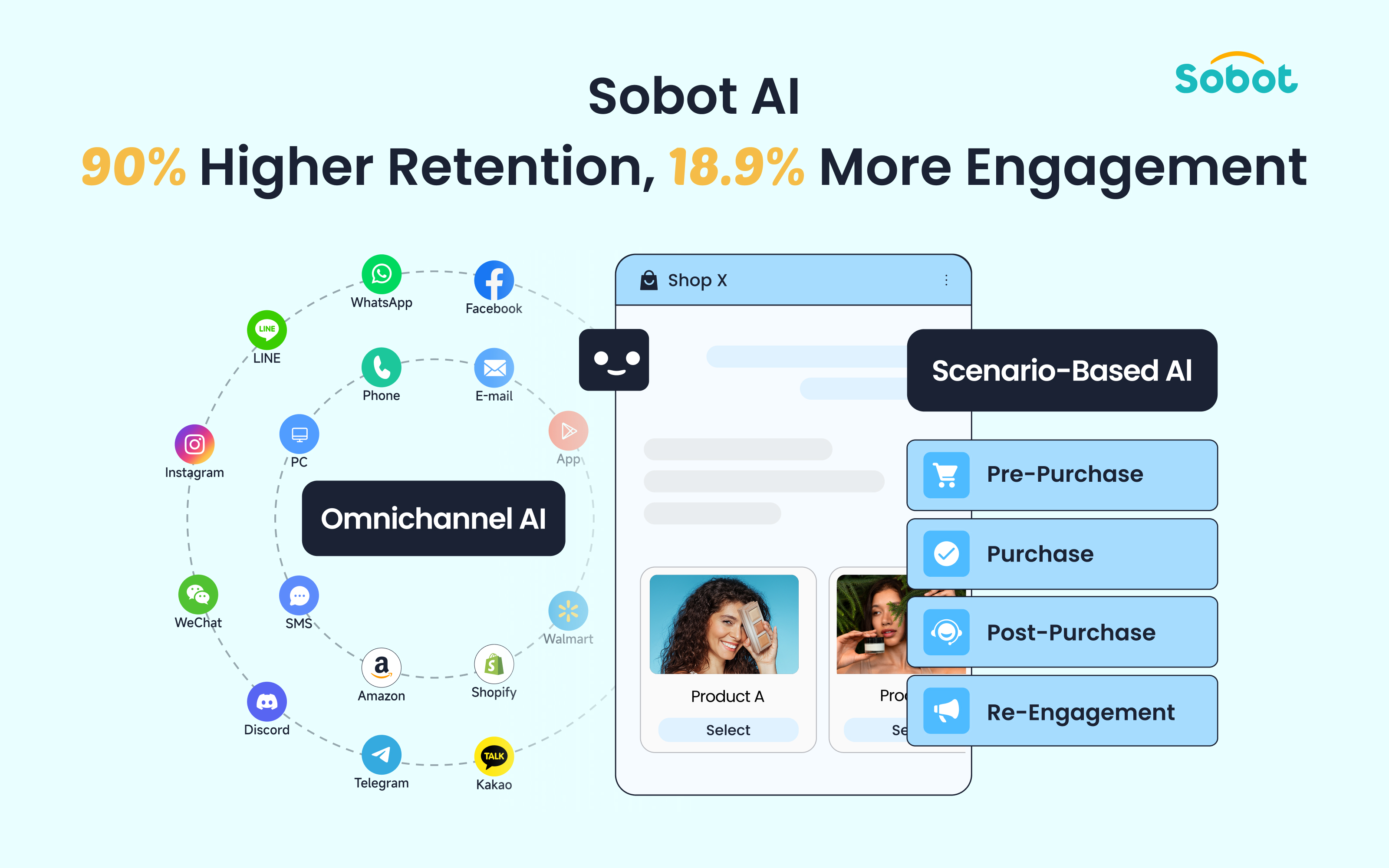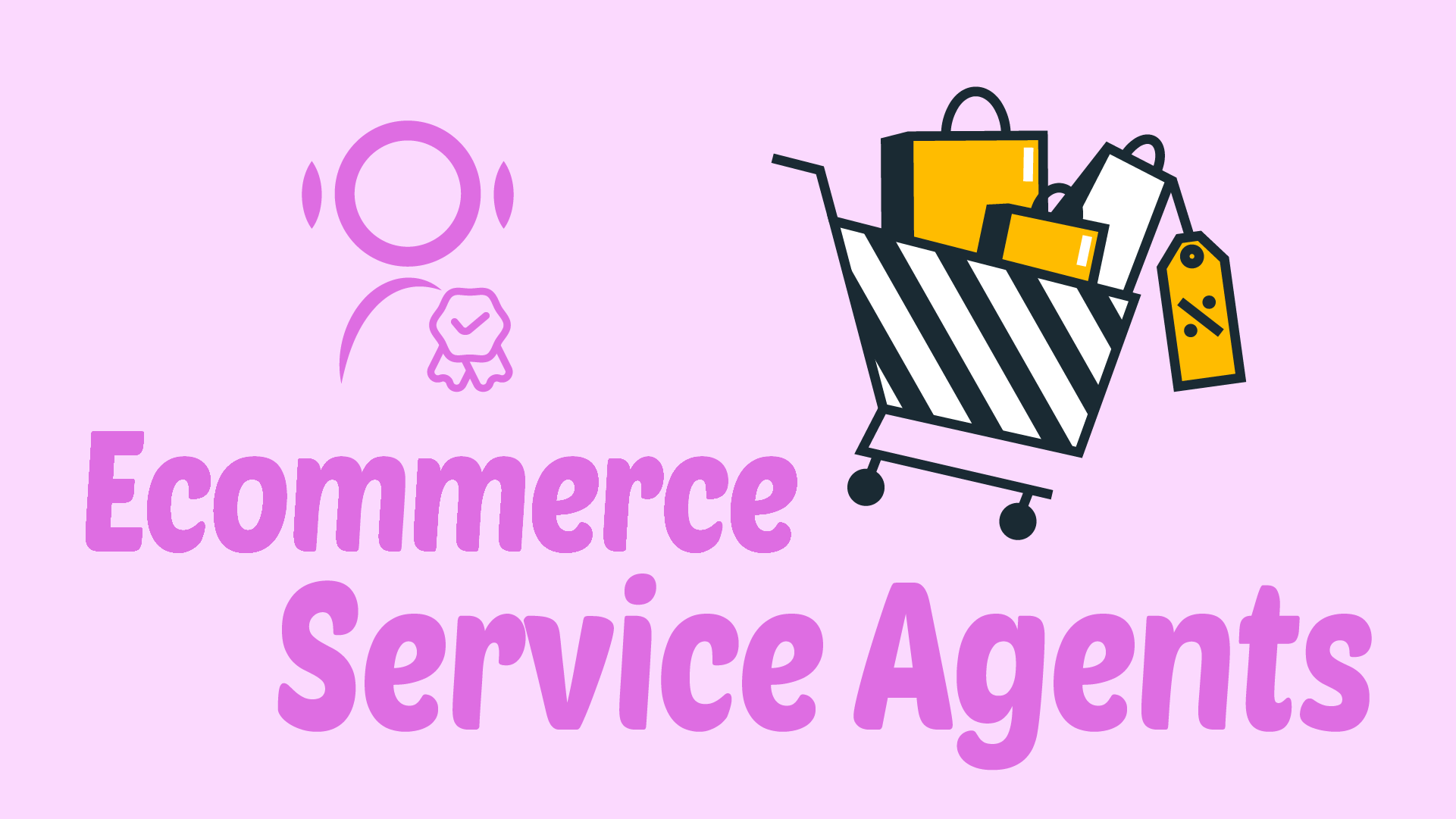Introduction to Generative AI in Sobot
As artificial intelligence continues to evolve, customer expectations are also rising. Today’s customers no longer want just fast answers—they want conversations that feel real, support that understands context, and solutions that reflect empathy. To meet these needs, Sobot has embedded Generative AI as one of the five foundational pillars of its AI-First strategy, a move that aims to redefine how businesses interact with their customers.
While most AI systems rely on rigid rule-based responses, Sobot’s Generative AI introduces fluid, human-like intelligence to customer service. It doesn’t simply retrieve predefined answers—it generates them on the fly, considering the full context, tone, and intent behind each customer message. This technology enables a shift from transactional support to conversational engagement, reinforcing Sobot’s mission to offer not just automation, but a humanized customer experience.
Workflow and RAG Technology: A Smart Engine Behind the Scenes
Sobot’s Generative AI doesn’t operate in isolation. It runs through a carefully designed workflow that powers intelligent, accurate, and human-like responses. This process is built on RAG (Retrieval-Augmented Generation) technology, combining knowledge retrieval with advanced response generation. Below is a step-by-step breakdown of how this smart engine works.

Knowledge Hub Integration
Decomposition of Knowledge
One of the first steps is decomposing the knowledge base. Instead of viewing entire documents or articles as a single block, Sobot intelligently breaks them down into smaller, context-specific pieces. These could be FAQ entries, support guidelines, or product documentation snippets. This granular structure makes it easier to match the right answer to a customer’s question.

Transformation into a Vector Database
After decomposition, each knowledge piece is converted into a vector—a mathematical representation that captures the meaning of the text. These vectors are stored in a vector database, enabling semantic search that goes far beyond keyword matching. This setup allows for fast and intelligent retrieval when the customer asks a question.
Customer Inquiry Processing
Refinement and Rewriting of Input
When a customer sends a message, Sobot AI doesn’t just take it at face value. It first refines and rewrites the inquiry to enhance clarity and structure. This rewriting process helps the system better understand the question, align it with decomposed knowledge, and ensure a more accurate match in the vector database.
Safety Check Mechanism
Simultaneously, the input is screened through a safety filter. This check removes harmful, inappropriate, or irrelevant content and flags sensitive or escalation-worthy requests. It ensures the system only processes valid, actionable input, protecting both the user and the business.
Retrieval Optimization
Integration and Re-Ranking of Knowledge
With the input decomposed and vectorized, the system performs a retrieval pass—scanning through the vector database for the most semantically aligned content. But the process doesn’t stop there. Sobot’s Generative AI applies a re-ranking algorithm, ensuring that the top answers are not only relevant but also prioritized based on context, intent, and urgency.

LLM-Powered Response Generation
Generating Accurate, Context-Rich Replies
At this stage, the processed input and retrieved knowledge are passed to advanced Large Language Models (LLMs). These models—fine-tuned with billions of data points—generate fluid, contextual responses tailored to the exact need of the customer. Unlike traditional bots, these responses are not static—they are personalized, situation-aware, and aligned with brand tone.
Output Actions: Clarification, Answering, or Taking Action
Depending on the scenario, the AI can:
- Ask for clarification if the query is vague.
- Deliver a comprehensive answer directly.
- Initiate a follow-up action such as scheduling, updating records, or redirecting to a live agent if needed.
This adaptive design enables Sobot AI to handle both simple FAQs and complex problem-solving with equal finesse.
Technology Stack: The Brains Behind the Brain
Behind this impressive pipeline lies a powerful and evolving technology stack that blends the best of open and proprietary AI tools.
Use of Multiple Advanced LLMs
Sobot’s Generative AI is powered by multiple Large Language Models, including top-tier names like OpenAI and DeepSeek. These models are not only highly intelligent in language comprehension but are also capable of understanding customer sentiment, regional nuances, and multi-turn conversations.
This multi-LLM architecture ensures that Sobot is not locked into a single vendor or model. It provides redundancy, flexibility, and performance optimization, letting Sobot choose the best-suited model for each task in real time.
Use of SLMs for Industry-Specific Accuracy
To further enhance accuracy and domain relevance, Sobot also employs Small Language Models (SLMs). These models are trained on industry-specific datasets—for instance, ecommerce return policies, telecom troubleshooting steps, or banking regulations. The result is hyper-targeted expertise that generic LLMs often lack.
SLMs complement LLMs by delivering concise, rules-compliant, and context-aware answers where precision is crucial.
Combination for Scalability and Customization
By integrating both LLMs and SLMs, Sobot’s Generative AI achieves the perfect balance between depth and accuracy, scale and specialization. It allows businesses to customize the AI to their brand tone, regulations, and customer expectations, making it a truly enterprise-grade solution.
Use Cases in Customer Service
Sobot’s Generative AI is not just a theoretical innovation—it’s delivering measurable results across real-world customer service scenarios. By intelligently managing conversations across multiple platforms and touchpoints, it enables businesses to provide faster, smarter, and more human-like support.
Auto-Generated, Relevant Responses
One of the most immediate advantages is the ability to generate instant, context-aware responses to customer queries. Whether it’s checking delivery times, answering product questions, booking appointments, or managing account preferences, Sobot AI delivers natural-sounding replies that often feel indistinguishable from those of a human agent. This helps brands maintain round-the-clock responsiveness, even outside business hours.

Handling Complex Inquiries with Contextual Understanding
Sobot excels in handling layered, multi-turn conversations—something traditional chatbots often fail to manage. When customers ask follow-up questions or change direction mid-conversation, Sobot’s AI doesn’t lose track. It retains the full context of the dialogue, identifies the evolving intent, and continues the conversation naturally. This allows it to resolve complex issues such as subscription changes, billing conflicts, or technical troubleshooting, all while minimizing friction.
Reducing Agent Workload Through Accurate First-Touch Resolution
By resolving a large percentage of tickets at the first point of contact, Sobot significantly reduces the need for human intervention. This empowers support teams to focus on high-priority or emotionally sensitive cases. And when escalation is necessary, the AI doesn’t just hand off the chat—it provides complete summaries, sentiment insights, and relevant history, giving human agents the context they need to respond effectively.
Together, these use cases illustrate how Sobot’s Generative AI is redefining the standards of customer service—making it more efficient, more scalable, and more human.
Traditional Chatbot vs. Sobot Generative AI
While many businesses still rely on traditional chatbots for customer service, these legacy systems often struggle to meet modern expectations. Sobot’s Generative AI represents a significant leap forward, addressing the shortcomings of older bots with intelligence, adaptability, and human-like understanding.
The table below illustrates how Sobot’s solution compares to traditional chatbot systems:
| Feature | Traditional Bot | Sobot Generative AI |
| Response Type | Predefined | Contextually Generated |
| Emotion Handling | Rigid / None | Adaptive & Empathetic |
| Query Complexity | Handles only simple FAQs | Handles multi-turn, layered issues |
| Industry Customization | Limited | High (via SLMs) |
| Escalation Workflow | Manual handover | Smart transition with summaries |
Benefits for Experience and Business
Sobot’s Generative AI doesn’t just automate support. It transforms the entire customer service experience. It brings value to both customers and businesses—by making conversations more natural and operations more efficient.
More Natural, Empathetic Conversations
Sobot understands how people feel. It picks up on tone. It detects frustration. And it knows when to respond gently or firmly. Unlike rule-based bots, it can adjust its language and mood. This makes conversations feel more human. Customers trust the support they receive. And brands build stronger emotional connections.
Faster Response Times and Improved Satisfaction
Speed matters. Sobot delivers responses in seconds. No long waits. No confusing menus. Just fast, helpful answers. This improves customer satisfaction (CSAT). It also reduces Average Handle Time (AHT). Support agents can resolve more cases in less time. The result? Happier customers and more efficient teams.
Professional, Consistent Communication Across Channels
Sobot works everywhere—on websites, mobile apps, WhatsApp, and even voice calls. No matter the platform, the tone and information stay the same. Customers get accurate, consistent replies, no matter where they reach out. This protects brand reputation. It also reduces errors and confusion.
Sobot acts like a single source of truth. It remembers past conversations. It follows company guidelines. And it learns from each interaction. This makes every response smarter than the last.
In short, Sobot’s Generative AI helps businesses offer faster, smarter, and more human support—without adding more people. It improves customer loyalty. It boosts team productivity. And it turns support into a real competitive advantage.
Conclusion
Generative AI is not just a feature in Sobot’s offering—it is the intelligent core that powers empathy at scale. By fusing advanced LLMs, industry-specific SLMs, and a refined processing workflow, Sobot delivers human-like service with machine precision.
This aligns perfectly with Sobot’s broader AI-First strategy—where automation is not the end, but a means to create experience-led, easy-to-use, and efficiency-driven AI solutions for the future of customer service.
As Sobot continues to evolve, its Generative AI capability will play a crucial role in reshaping digital support across industries—making customer service smarter, faster, and more human than ever before.
